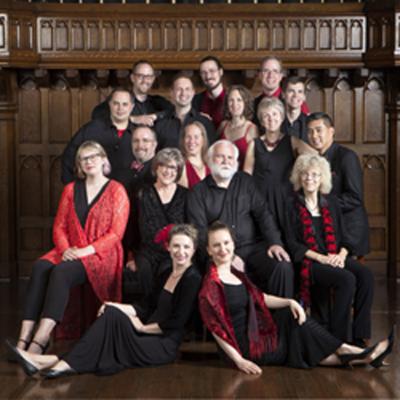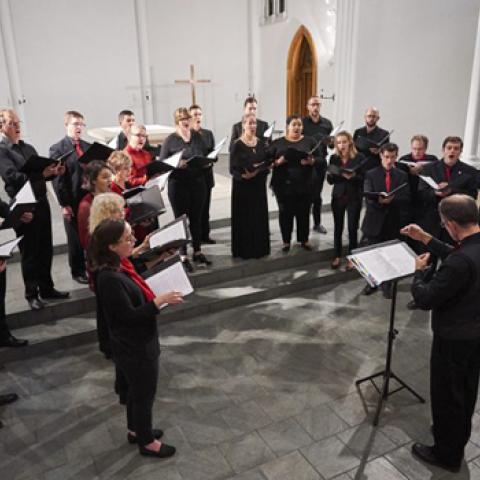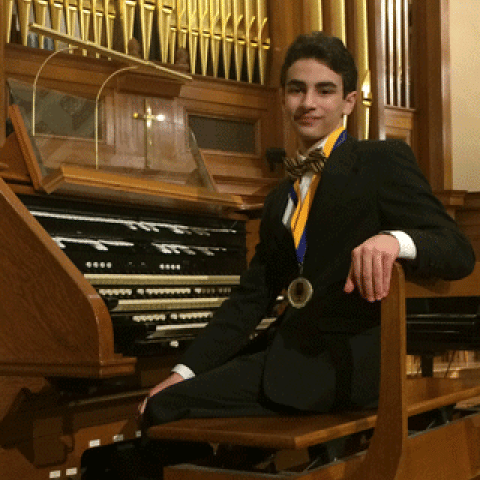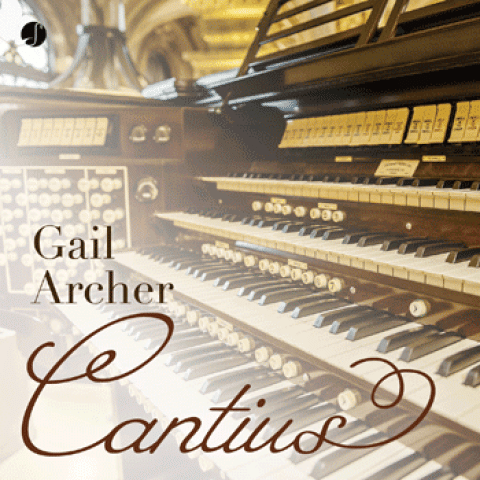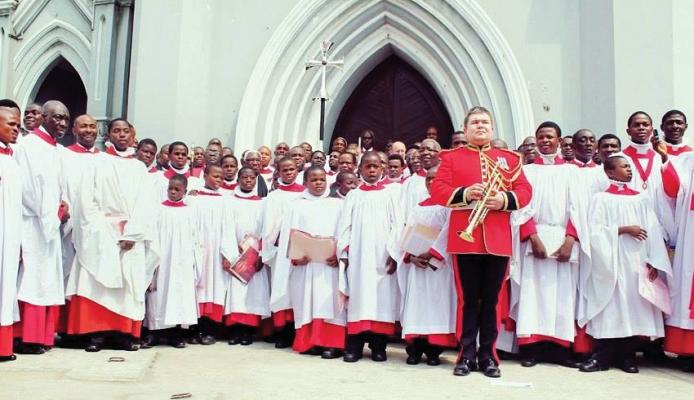An important event in the history of church music in Nigeria was observed in 2018. It connotes longevity and continuity as we celebrate the centenary of the oldest choral group in Nigeria (1918–2018), which finds its home in the oldest Anglican cathedral in Nigeria, the Cathedral Church of Christ, Marina, Lagos. The history of the Cathedral Choir began in 1895, when Reverend Robert Coker inaugurated the first Anglican choir in the country. The centenary is associated with the first choir festival celebrated on November 23, 1918, under the mantle of the progenitor, Thomas Ekundayo Phillips. Since then, the choir’s anniversary has been celebrated around this period on the Sunday nearest to Saint Cecilia’s Day in November each year. The choir has gone through several phases in the hands of organists and choirmasters, without losing its standard, tradition, fervor, ethics, and focus on cathedral liturgy and challenging musical heritage.
Singing has always been an integral part of worship at the Cathedral Church of Christ since its inception in 1867. It is referenced that the first organist, Robert A. Coker, just before his appointment as organist, was sent to England to expand his knowledge of church music in order to inaugurate a choir suitable for Christ Church, to be second to none in Nigeria. The choir was expected to be able to sing in a manner worthy of being regarded as a model by other churches. The initial choir set up by Coker comprised women and men. It was later reorganized during the ministry of Reverend Hamlyn, who replaced the women with boys and young men. The present choristers, comprising several choirboys together with the gentlemen of the choir who sing alto, tenor, and bass, continue this tradition of singing into the twenty-first century, providing music at worship services and other occasions throughout the year. The choir also reaches out to a wider audience by singing in live radio broadcasts during Easter and Christmas seasons, and also through their compact disc recordings. The basis of the choir’s ministry is the regular singing at cathedral services, but there are other activities, including choir feasts, picnics, as well as frequent concert appearances in the cathedral and other venues.
Repertoire
The Cathedral Church of Christ Choir is one of the most respected choral groups in Nigeria and throughout the continent of Africa. It is particularly noted for its wide range of liturgical repertoire, which forms the bedrock of weekly worship in the excellent acoustics of the Gothic cathedral. The repertoire is similar to that of any typical English cathedral choir. It primarily reflects the seasons of the liturgical year, with plainsong antiphons and hymns, challenging festival anthems, and more flamboyant Eucharistic settings, such as Alan Wilson’s Mass Of Light and Mozart’s Mass in B-flat, in addition to the daily music. The repertoire encompasses a broad range of styles and compositions ranging from plainchant to classical, African-American spirituals, contemporary American praise choruses, and Nigerian indigenous gospel music.
The Cathedral Choir repertoire ranges from Orlando Gibbons anthems, motets, and madrigals to Herbert Howells’s strong individuality, to Edward Elgar’s combination of nobility and spirituality of utterance with a popular style. The choir has always incorporated the works of some indigenous Nigerian composers, mainly ex-choristers and present musicians of the Cathedral Church. Among the composers whose music still enriches the repertoire of the choir are the father of Nigerian church music, Thomas Ekundayo Phillips, whose indigenous sacred Yoruba compositions are often heard in the cathedral, and Fela Sowande, whose Responses in English are still sung regularly at Matins and Evensong. Other notable composers include Ayo Bankole, Samuel Akpabot, and Godwin Sadoh.
The choir is polyglot, performing works mainly in English, but occasionally singing in other European languages such as Latin as well as in the Yoruba dialect during special diocesan services of the Anglican Synod, combined mass choir or the augmented choir events,1 and Evensong. In recent years, it has given a few performances of some major works in the cathedral including Felix Mendelssohn’s St. Paul in November 2008 at its ninetieth anniversary concert, and Handel’s Messiah in December of that year. Some other major works that the Cathedral Choir has performed in the past include Handel’s Judas Maccabaeus in 1998, at the Musical Society of Nigeria (MUSON), Lagos, for its eightieth anniversary, Haydn’s The Creation in April 2001, and Johann Sebastian Bach’s Christmas Oratorio.
As the premier choir in Nigeria, Cathedral Church of Christ Choir has played a major role in shaping the direction and development of church music in Nigeria especially in the Anglican Communion. The choir’s work is felt not only in the Anglican Church, but in other denominations as well. The annual choir festivals, Advent carol services, Festival of Lessons and Carols, classical music concerts, choir feasts, and picnics continue to attract choristers and music enthusiasts from the Methodist, Baptist, Catholic, Charismatic, Lutheran, Presbyterian, Reformed, African, Evangelical, and non-denominational churches such as Pentecostals, from different parts of the southwest region of Nigeria. The choir connects American culture with Nigeria through the use of spirituals in the compositions of its ex-choristers and their musical training in American universities, primarily Fela Sowande.
Organists and masters of the music
The choir has been trained and directed by musicians such as Robert Coker, Thomas Ekundayo Phillips (1884–1969), Charles Obayomi Phillips (1919–2007), Olayinka Sowande (Fela Sowande’s younger brother), Tolu Obajimi, and presently, Babatunde Sosan (b. 1975). From the late nineteenth century to the present, those at the helm of music ministries at the cathedral have been skillful and talented.
Apart from the weekly routine of choir practices in preparation for Sunday worship, the master of the music and choirmasters are responsible for preparing the choir for concerts that feature repertoires of sacred choral, instrumental, and organ pieces. The concert performances are in the form of the annual choir festival, Advent carol service, Festival of Lessons and Carols, Easter cantata, Christmas concert, and various other concerts throughout the year.
Most of the music used for worship is by British composers: John Ireland, William Byrd, John Stainer, Bernard Rose, David Willcocks, John Rutter, Ralph Vaughan Williams, Samuel Wesley, Thomas Attwood, Charles Villiers Stanford, Malcolm Archer, George Thalben-Ball, Sydney Nicholson, Herbert Howells, Hubert Parry, Edward Elgar, Eric Thiman, Healey Willan, Walford Davies, Edward Bairstow, William Harris, Orlando Gibbons, Martin Shaw, William Boyce, William Matthias, Robert Cooke, and Charles Stanley. However, compositions from other European nationalities are occasionally incorporated into worship, including works of Beethoven, Mozart, Bach, Vivaldi, Liszt, Widor, Alain, and Schubert.2
The cathedral has been served by three generations of the Phillips family as organists and masters of the music. Ekundayo Phillips’s tenure was the longest, spanning forty-eight years (1914–1962). His son, Obayomi Phillips, served for thirty years (1962–1992). Tolu Obajimi occupied the same position for two decades (1993–2013). Olayinka Sowande spent the least amount of time in office, July to December 1992. The reason for the short term was that as the sub-organist to Obayomi Phillips for several years, he was next in line for promotion to the position of master of the music; thereafter the Cathedral Church gave him the position in 1992. However, old age did not permit Sowande to stay longer than six months in the position as he was already an octogenarian. Time and circumstances will determine the length of Babatunde Sosan’s tenure.
Choir training
The outstanding musical standard of the Cathedral Choir today reflects the models established by Thomas Ekundayo Phillips. Some of the ideals instituted by Phillips included strict discipline, clarity of diction and pronunciation, regular and punctual attendance at choir practices, correct interpretation of notes, voice balance, articulation, attack, comportment, reverence in worship, and utmost sense of good musicianship. As a pedantic choir director, his expectations were very high and certainly demanding, but the choir always rose to his standard and taste. Ekundayo Phillips’s philosophy toward choral training cannot be overemphasized. He would detect and correct any musical snag such as faulty notes emanating from any section of the choir. Ekundayo Phillips would also call to order any chorister who did not hold his music book correctly, such as covering his face with it or placing it on his lap while seated.
Before a choirboy or man can be admitted into the choir to sing in Sunday worship, he first goes through the rigorous probationary period that normally lasts several months. In the case of the choirboys, their probationary period lasts eight months, while probation for those who wish to join the choir as adults to sing alto, tenor, or bass is three months. The author remembers his probationary period in 1980 while still in high school. He attended the choir practices on Tuesday and Thursday evenings, but on Sundays would sit in the congregation for worship and was not allowed to sing with the choir until the three months of probation was completed. Whenever the young neophytes complete their probation, they are formally admitted into the Cathedral Choir at a special service in which their parents assist them to put on the white surplice over the black cassock. The induction ceremony is always a moment of joy and pride for the parents.
Choir ministry
The choir leads the congregation every Sunday in hymn singing, responses (antiphonal prayers set to music), special settings of liturgical music such as Venite, Benedictus, Te Deum, Nunc dimittis, Magnificat, Jubilate, and settings of the Eucharist. The master of the music uses the choir to teach the congregation new hymns, service music, and songs. This is realized by the choir first singing all verses of a hymn as an anthem on a Sunday, while the congregation is asked to sing along the following Sunday. Occasionally the choir sings several verses before the congregation joins. The Cathedral Church of Christ proves to be an inclusive culturally blended congregation in terms of hymnals used for worship. The church exemplifies the nature of an interdenominational faith-based organization with the use of hymnbooks from diverse churches. The hymnals used for worship include Hymns Ancient and Modern, Hymns Ancient and Modern Revised, Songs of Praise, Methodist Hymn Book, Hymnal Companion, Baptist Hymnal, Saint Paul’s Cathedral Psalter, Church Hymnal, Alternative Service Book, New English Hymnal, Redemption Hymnal, Broadman Hymnal, Sacred Songs and Solos, More Hymns for Today, American contemporary praise choruses found in Songs for Refreshing Worship, and indigenous hymns written by Ekundayo Phillips as well as other members of the choir.
Concert performances
There are other times in the year that the Cathedral Choir performs concerts in and outside of the church. Oratorios, cantatas, and orchestral works have been performed by the choir such as Mendelssohn’s Elijah in 1989, as well as Hymn of Praise and Saint Paul; Bach’s Christmas Oratorio in 1953; Coleridge-Taylor’s Hiawatha’s Wedding Feast; Handel’s Judas Maccabaeus and Ode on Saint Cecilia’s Day performed in 1998; Haydn’s Creation; Stainer’s Daughter of Jairus and Crucifixion performed in 1916; Davies’s The Temple; and Elgar’s Pomp and Circumstance performed by the Cathedral Church of Christ Choir Orchestra at the eightieth anniversary of the choir on November 22, 1998. On March 20, 2016, the Musical Society of Nigeria (MUSON), in collaboration with the cathedral, presented Fauré’s Requiem, featuring the MUSON Choir, Cathedral Choir, MUSON Chamber Orchestra, and MUSON Ensemble.
These concerts featured solos, choral, and instrumental music. The events often attract dignitaries, professional musicians, and students from far and near. The venues of the concerts include the Cathedral Church, Glover Memorial Hall, Musical Society of Nigeria (MUSON) Center, and other concert halls in Lagos.
Some of the concerts were specifically organized to raise funds for either the Cathedral Church or to buy a new organ. For instance, Ekundayo Phillips embarked on a concert tour with his choir to Abeokuta on August 24, 1930, and later to Ibadan, to raise funds to build a new pipe organ for the Cathedral Church. In these concerts, the Cathedral Choir performed mostly Ekundayo Phillips’s Yoruba songs to the delight of the indigenes of southwest Nigeria. The concerts were a success because the choir alone was able to raise more than half the cost of the organ.
In 1927, Ekundayo Phillips went as far as England to appeal to British congregations for money to build a pipe organ. He was able to raise a substantial amount through the successful rendition of some of his Yoruba compositions by Saint George’s Church Choir on October 23, 1927. The Yoruba songs were recorded by H. N. V. Gramophone Company in London, while the royalties from the sales of the recording were all given to the Cathedral Church of Christ, for the purchase of an organ in 1932.
The Cathedral Choir has performed for numerous dignitaries. The group performed before the British royal family, first in April 1921 at the cornerstone laying ceremony of the Cathedral Church of Christ, by His Royal Highness, the Prince of Wales. In January 1956, the choir performed before Her Majesty Queen Elizabeth II and Prince Phillip, when they worshiped at the Cathedral Church; and finally, on October 2, 1960, at the Independence Day service of Nigeria, attended by Her Royal Highness, Princess Alexandra. On an Advent Sunday in 1972, the Cathedral Choir performed with the King’s College Cambridge Choir, during their visit to Nigeria. The first broadcast by the Cathedral Choir on the British Broadcasting Corporation was aired on December 12, 1951.
Compact disc recordings
The Cathedral Choir’s work has not been restricted to only live performances at services and concerts. The choir has recorded some of its favorite works to reach out to the wider church music community. During the tenure of Thomas Ekundayo Phillips, the choir recorded two of his songs, Emi O Gbe Oju Mi S’Oke Wonni (I Will Lift Up My Eyes to the Hills—Psalm 121) and Ise Oluwa (The Work of the Lord) for the
BBC series, Church Music from the Commonwealth. In 2006, the choir released its first compact disc set, Choral Music: Volumes I & II. The two CDs contain a selection of hymns, anthems, psalms, Te Deum, and Jubilate that the Cathedral Choir has sung over decades. Composers of the selected works as usual were mostly British with the exception of the Cathedral Choir musicians, in particular, Thomas Ekundayo Phillips, Modupe Phillips, Obayomi Phillips, Soji Lijadu, Fela Sowande, Olusina Ojemuyiwa, Yinka Sowande, and Babatunde Sosan.
Conclusion
In spite of the stability and loyalty to the Anglican worship system, the music ministry at the Cathedral Church of Christ has gone through a transformation to conform with modern trends in Nigeria. The middle of the 1980s chronicles the emergence of the Neo-Pentecostal-Evangelical churches and university campus Christian fellowships all over the country. These were largely driven by an American innovation of worship and evangelistic methodologies. Hence, singing in those arenas is characterized by the adoption of contemporary American praise choruses. The new churches have been founded primarily by Nigerian pastors trained in American seminaries and Bible schools. The pastors, at the completion of their training in the United States, returned to Nigeria to establish an experiential worship that mirrored what they had been exposed to in the United States. Other factors that paved the way for the proliferation of American influences were the abundance of sermons and songs on audio and video recordings, praise chorus hymnbooks with staff notation, and Christian literature sold in local religious bookstores. These influences are interwoven into various strands of worship that undisputedly distinguish the new churches from the well-established Protestant churches such as the Anglican, Baptist, Lutheran, Presbyterian, and Methodist denominations.
On a final note, twenty-first-century congregational singing at the Cathedral Church of Christ is indeed a commixture of traditional hymns and contemporary American praise choruses, a tuneful blending of the American and the British influences. At each service, each congregant’s musical taste is met through the appropriation of a pluralistic worship. It is not only the indigenous members that are being catered to, but also visiting European and American worshippers who comfortably feel at home in the Cathedral Church of Christ with this type of multi-cultural musical repertoire. While all these evolutions continue, the Cathedral Choir and its musicians have painstakingly endeavored to maintain a befitting exceptional musical standard that it is reputed as a role model for other choirs, thereby preserving the legacies of the founding fathers of the choir, namely, Robert Coker, Thomas Ekundayo Phillips, and Charles Obayomi Phillips.
The Cathedral Church of Christ, Lagos, website: https://www.thecathedrallagos.org
Notes
1. Combined Mass Choir or Augmented Choir is a choral outfit comprising of about a hundred voices made up of choristers from various Anglican churches in Lagos.
2. This essay is derived from the author’s book, The Centenary of the Cathedral Church of Christ Choir, Lagos (Columbus, Ohio: GSS Publications, 2018).
